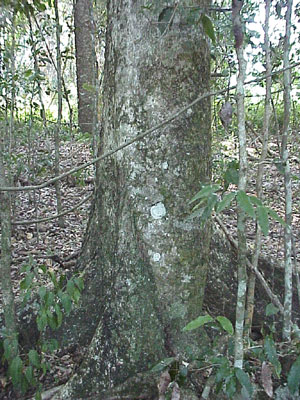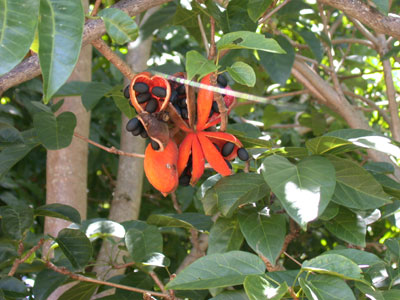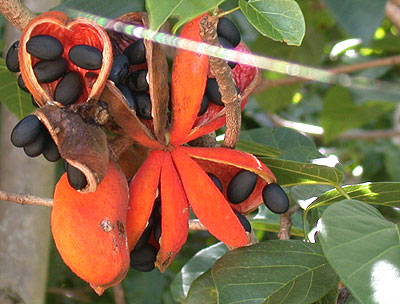Leaves are simple, alternate in pseudo-whorls, 5 12cm, shiny bright green with long petioles. Flower is inconspicuous, creamy-white and lemon-scented, Nov - Jan. Fruit is a large, eye-catching red capsule with about 8 shiny black seeds. Handsome, ornamental tree, deciduous in cooler areas. Requires good drainage Edible raw or roasted seeds taste similar to peanuts. Fresh seeds germinate easily and quickly, sometimes within 3 days. Used by Aborigines in N Australia to treat wounds and stings. |
 |
| Sterculia quadrifida - trunk - Bruce Noble © 2002 |
|


